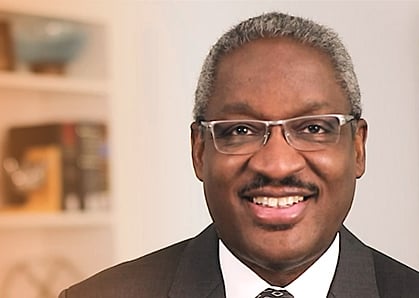Public-Private Collaborations Deliver on Infrastructure
Our nation's aging infrastructure continues to demand the limited resources of government. States throughout the country are faced with rusting bridges, overloaded sewer systems, and crumbling roads. Solutions to this systemic problem come with hefty price tags the public sector may be unable to tackle on its own.
With local budget shortfalls and patchy federal funding unable to fill the gaps, state and local lawmakers must think beyond traditional public financing structures and access the private capital and expertise currently sitting on the sidelines.
Effective partnerships between the public and private sectors offer solutions that avoid the necessity of full, up-front public funding and mobilize billions of private dollars for the modernization of the country's infrastructure.
Public-private partnerships, known as P3s, may be particularly useful in the context of transportation infrastructure where federal funding is increasingly uncertain.
Just days ago, Congress struggled to pass a stopgap measure that would fund the Highway Trust Fund for an additional two months beyond May 31, the date the previous quick-fix funding bill was set to expire.
The Highway Trust Fund is the reserve from which the federal government funds roadway infrastructure and mass transit projects throughout the county. The fund is replenished primarily from federal taxes collected on gasoline and diesel fuel. Lawmakers have not raised these fuel taxes since 1993, however, and in the past 10 years spending from the Highway Trust Fund to address aging infrastructure has exceeded revenues by more than $52 billion.
By law, the fund cannot operate with a negative balance nor can it borrow money to cover outstanding obligations. To keep the fund in the black, Congress has continuously turned to temporary funding measures, kicking the can down the pothole-ridden road for brief periods of time.
Slow Adoption
With a long-term public financing solution unlikely in the near future, P3s may offer state and local leaders a viable and perhaps more efficient option for the provision of much-needed transportation projects.
P3s allow governments to share the risks and rewards of major infrastructure projects with the private sector while delivering the project faster and more effectively than the government could on its own. In a well-structured P3, a private sector partner will assume ongoing responsibility in two or more of a P3s traditional components including the design, building, operation, maintenance and financing of the project.
Despite the benefits P3s bring to the table, many states have been slow to adopt laws that would foster and efficiently increase their use.
According to the U.S. Department of Transportation, 33 states and one territory have enacted statutes enabling the use of P3s for the development of transportation infrastructure, leaving 17 states without the legal framework necessary to effectively partner with the private sector in this arena.
Florida first enacted a statute allowing P3s for transportation facilities over two decades ago and has since put it to good, albeit limited, use.
A prime example is the PortMiami Tunnel project. The tunnel, which provides a direct connection between Miami's port and Interstates 395 and 95, is the result of a P3 between the Florida Department of Transportation and MAT Concessionaire LLC.
Through a 35-year concession agreement, responsibility to design, build, operate and maintain this technically challenging project was transferred to the concessionaire.
The partnership also allowed for private financing of the $668.5 million design and construction cost, which will be paid in installments by FDOT until the tunnel is transferred back to the state in 2044.
FDOT has also engaged the private sector for the transformation of Interstate 4 in Central Florida through a 40-year concession agreement under which FDOT will make payments to the private partner during the construction phase followed by performance-based payments throughout the operations and maintenance period of the contract.
The newly constructed express lanes on I-95 in Miami were also delivered via P3, and FDOT is currently analyzing a design-build-finance P3 for improvements to I-395 in Miami.
Effective Tool
Where public funding is unavailable to fulfill the demand for mass transit projects such as rail services, cooperation with the private sector yields tremendous benefits.
Throughout Florida, a number of private rail projects have been discussed and proposed, and others are underway. These projects will alleviate congestion and dramatically improve connectivity between major economic hubs such as tourist destinations and important government assets, all without dipping into local coffers.
P3s are an effective tool outside the transportation context as well. In 2013, Florida enacted a broader P3 statute, enabling the private sector to more easily partner with governments to tackle a wide range of infrastructure projects.
Miami-Dade County's Water and Sewer Department, or WASD, is using the new flexibility afforded by the statute to solicit private partners in the execution of its multiyear capital improvement plan.
Over the next two decades, the county will invest roughly $13.5 billion in upgrades to WASD's infrastructure and plans to engage private sector partners in delivering state-of-the-art technology.
The active engagement of private partners by government leaves infrastructure around the country less vulnerable to the partisan ebbs and flows of the federal budget.
Moving forward, P3s and similar collaborations between the public and private sectors can effectively deliver infrastructure projects that may otherwise be delayed or never completed absent the financing and technical expertise offered by private partners.
